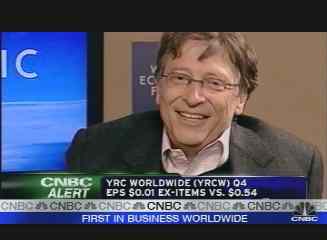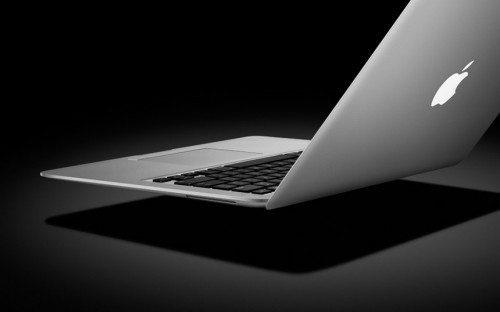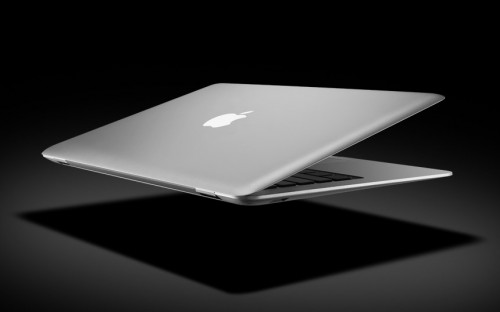No list of trends would be complete without a mention of Apple's iPhone, a device that many handset manufacturers will be looking to beat in 2008 in order to attract a consumer that is ever more interested in advanced wireless services. Many of those devices will debut at CES next week.Since its launch in June of last year, iPhone sales have nearly topped 2 million. While the closed nature of Apple's business model has kept the device out of the hands of many consumers, the iPhone no doubt has sparked a revolution in the entire mobile phone industry.
Manufacturers have been quick to jump on the bandwagon and add devices to their portfolios that mimic the most sought-after features of the iPhone. Even software developers have seized opportunities that the phone's release have created.
This rush of competition will keep Apple on its toes in 2008, in a race to stay one step ahead of the industry which is hungry for a piece of the iPhone pie. It is this high-stakes game of cat-and-mouse among mobile vendors that will likely be one of the bigger stories coming out of CES this year and beyond.
Touch-screen technologyPerhaps the easiest place for these manufacturers to start would be mimicking the touch-screen functionality that the iPhone provides. While touch screens have now been available on phones for several years thanks to devices like Palm's Treo, Apple has put this functionality in the hand of general consumers, not just business users.
Furthermore, the Cupertino company eliminated the need for a stylus which was commonplace among touch-screen phones previously due to their smaller screens. Apple also made the touch-screen technology a larger part of its overall user interface design through the inclusion of finger "gestures" to navigate through the device.
The first device to follow the iPhone with similar technology was the Touch from Taiwanese manufacturer HTC. Like the iPhone, the Touch lacks any kind of physical keyboard, and uses a similar UI concept called "TouchFLO" that requires similar finger gestures for navigation purposes.
HTC quickly found there was a market for such a device, with the Touch selling 800,000 units in a matter of three months through October. The company has since expanded the line with two additional models, the Dual Touch that combines the interface with a slide-out keypad, and the recently released Cruise, which integrates GPS functionality.
Other finger-based touch devices have come along since then: Verizon has recently begun a heavy push of the Venus by LG. More touch-based phones are expected to be introduced at CES, as manufacturers attempt to improve on Apple's innovative design to win over consumers eager for the latest technology.
Visual VoicemailMany moons ago, voicemail was one of those bonus features that consumers were expected to pay for separately. Those times have long since passed, and voicemail is now a basic feature that users have come to expect for free.
Thus, voicemail technology has largely taken a backseat in many carriers' list of priorities, and has seen little in the way of innovation since it became commonplace over a decade ago. Apple has finally changed that with the iPhone.
Its Visual Voicemail functionality became a hallmark of the iPhone, and is even cited by the Cupertino company as one of the primary reasons why it had to select a specific carrier -- in the United States, AT&T Wireless -- in order to launch the device.
Instead of the standard way of checking one's messages by calling a number and sitting through numerous spoken prompts, Visual Voicemail works more like e-mail. It allows the user to see in a single glance who has called them, and selectively listen to and delete voicemails without having to play them in any specific order.
Due to the apparent technology hurdles, it could be a while before any kind of similar functionality makes it to other phones or wireless carriers. The closest anyone has come so far is
Callwave, and even there it requires the individual to be using his or her computer and not a mobile phone.
It will be interesting to watch at CES whether anyone attempts to expand the concept of Visual Voicemail to devices beyond the iPhone.
Full Web browsingUntil the iPhone launched, browsing the Web on the cellular phone was largely a frustrating and fruitless experience. Most of the Web was not available in a format suitable for viewing on the smaller screen of a handheld device.
iPhone's included Safari browser could be credited with changing this dichotomy. Consumers for the first time were able to view Web pages as they were intended to be viewed, no matter if they were formatted for the mobile phone or not.
Apple also overcame the screen size issue by allowing the browser to intuitively zoom in and out of sections for easier reading. Support for actual HTML standards and JavaScript means that a large majority of Web pages will appear on the iPhone screen just as they would on the desktop.
While Apple's mobile Safari isn't completely perfect, it is a step in the right direction, and has spurred other software developers to work on options for other phones. The first of these companies to offer an alternative is Opera.
Its newest Opera Mini browser works much like Safari does, taking Web pages and shrinking them down to fit within the traditional mobile screen, and allowing for zooming in and out of the various sections of a page.
However, Opera's browser doesn't seem to render the pages in the same way that the iPhone does. In tests of both options, Safari seems to consistently load pages closer to that of the desktop than its competitor.
Microsoft is expected to make similar improvements to Pocket IE in the next version of Windows Mobile, which could make its first public appearance at CES next week.
A move toward higher-quality materialsWith cell phones continuing to shrink in size and shorten in life span before obsolescence, the trend in recent years has been to make them with cheaper materials. Plastic has become the shell of choice for most phones, and mobile devices have seen a drop in durability as a result.
With the iPhone, Apple went the other direction. Instead of using plastic, the phone was built with a combination of metal and glass, resulting in increased durability and an overall feeling of quality. In addition, the company also successfully shrank the size of its smartphone to a form factor that is much easier to hold in the hand.
In that category, the iPhone currently has no equal. While competitors like the HTC and LG are shrinking their smartphones down to a more manageable size, overall design quality still is lacking. The Touch line is built mostly from plastic, and the Venus only includes a few higher-end materials in its design.
Another break from the norm is the amount of memory made available within the iPhone. 8GB of storage space holds movies, pictures and data -- more than any other device in its price class by far.
Before the iPhone, this kind of data storage was only available on ultra-high end phones, like Nokia's music phones. With the expanded storage came an equally expanded price tag; for example, Nokia's N95 retails for $779 USD unsubsidized,
While many have complained about the iPhone's $399 USD price tag as being high, when looking at its competition, the iPhone could be considered a relative bargain. Apple's entrant into the mobile space may actually benefit all by bringing the cost of higher-end, higher-quality phones down to prices that the typical consumer can afford.
Rivals can go after users Apple has left behind"[The iPhone has] certainly changed the game in a number of ways, especially with regard to putting the user interface front and center of the device creation process," Disruptive Analysis principal analyst Dean Bubley told BetaNews. "It has also really stimulated a re-evaluation of the commercial relationships of mobile carriers & their handset suppliers."
Bubley said that he doesn't expect the iPhone to be made obsolete by its competitors any time soon, however he suggest that Apple become more embracing of unlockers -- those trying to make the device work on carriers other than AT&T -- in order to avoid becoming an niche product.
In any case, the iPhone will certainly shake up the industry in the year to come. And while it may not necessarily become obsolete -- especially with Apple likely to unveil future upgrades and even a 3G model in the coming months -- the iPhone may lose some of its uniqueness as others attempt to mirror its success.
Labels: iphone














